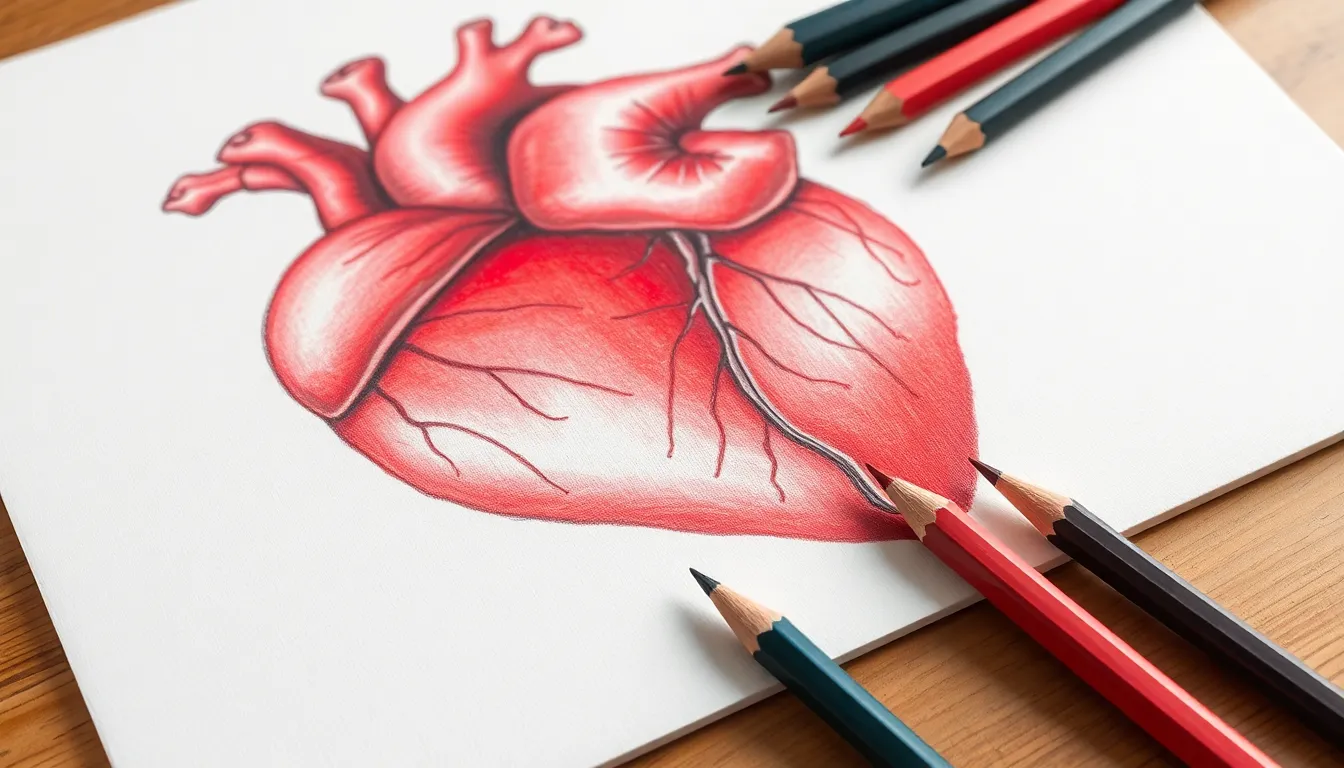The Best Fluffy Pancakes recipe you will fall in love with. Full of tips and tricks to help you make the best pancakes.

Realistic Heart Drawing Easy: Step-by-Step Guide to Create Stunning Love Art
Drawing a realistic heart might sound like a daunting task reserved for art prodigies, but fear not! With a few simple tips and tricks, anyone can create a masterpiece that’ll make even Cupid jealous. Whether you’re looking to impress a special someone or just want to add some flair to your sketchbook, this guide is your ticket to heart-drawing success.
Imagine turning a blank page into a stunning, lifelike heart that captures the essence of love and emotion. It’s easier than it sounds! With the right techniques and a sprinkle of creativity, you’ll be sketching hearts like a pro in no time. So grab your pencils, channel your inner artist, and let’s dive into the world of realistic heart drawing. Who knew love could be so easy to draw?
Materials Needed for Realistic Heart Drawing Easy
Gather essential materials to create a realistic heart drawing. Pencils of various hardness, like HB for sketching and 2B for shading, enhance details. Erasers, particularly kneaded erasers, allow corrections for precise lines.
Quality paper, such as sketch or drawing paper, provides a suitable surface for pencil work. Optional colored pencils add vibrancy, making the heart design pop. A ruler helps maintain symmetrical proportions and straight edges.
Blending stumps or tortillons, used for smoothing pencil marks, create softer transitions. Reference images, whether photographs or sketches, guide the drawing process.
Staying organized with a drawing folder can keep materials accessible. Additionally, a sharpener ensures pencils are always ready for use. Emphasizing quality tools elevates the final drawing.
Appropriate lighting contributes to accurate color perception. Keeping all materials within reach streamlines the creative process. By assembling these items, anyone can confidently begin their heart drawing journey.
Step-by-Step Guide

Creating a realistic heart drawing is straightforward with the right approach. Follow these steps to achieve an impressive result.
Sketching the Basic Shape
Start by drawing an elongated oval. This oval forms the heart’s outline. Next, add two smaller circles at the top for the lobes. Connecting these shapes creates a smooth curve at the top. After that, taper the bottom of the oval into a point. This point completes the basic heart shape. Use a light hand while sketching, as you’ll refine it later. Erase any unnecessary lines to maintain a clean canvas.
Adding Details and Textures
Add details to enhance realism. Begin by drawing veins that branch outward from the heart’s center. These veins provide character and depth. Next, incorporate shading along the edges, using a 2B pencil for a smooth gradient. Blend these shaded areas gently for a more natural look. Include subtle highlights to create a three-dimensional effect. Lastly, consider using colored pencils for added vibrancy. Use reds and pinks to evoke warmth, applying these selectively for the best impact.
Tips for Better Heart Drawing
Effective heart drawing relies on technique and color choices. Implementing proper shading and color can elevate a simple drawing into a stunning representation.
Shading Techniques
Shading creates depth in heart drawings. Start by applying light pressure with a pencil to achieve subtle gradients. Layering darker shades in areas that would naturally incur shadow, such as along the edges, adds realism. Blending tools, like tortillons, can help smooth transitions between light and dark areas. Use an eraser to create highlights, enhancing the three-dimensional effect. Vary the pencil strokes for texture; circular motions can depict a smooth surface, while straight lines can represent more defined edges.
Color Choices
Selecting colors influences the overall mood of your heart drawing. Reds and pinks often evoke feelings of love and warmth, making them popular choices. Consider using a combination of light and dark shades of these colors to add dimension. Experimenting with complementary colors, such as greens or blues, can create striking contrasts. Instead of uniform coloring, apply layers for richness, starting with a base color and building up with darker or lighter tones. Avoid over-saturation to keep the drawing balanced and visually appealing.
Common Mistakes to Avoid
Avoiding common mistakes significantly enhances heart drawings. Focusing on proportions is essential. Many artists tend to overlook basic shapes, resulting in unrealistic forms. Failing to maintain balance between the lobes leads to an uneven appearance. Sketching the outline lightly allows for adjustments before committing to deeper lines.
Neglecting shading techniques can diminish realism. Proper shading adds depth; emphasizing light and shadow makes a heart drawing come alive. Utilizing a lighter touch with shading pencils can create smoother transitions. Focusing solely on outlines without adding detailed features, such as veins, can make the drawing appear flat.
Not blending colors properly affects the overall look. Blending ensures that color gradients flow naturally. When artists layer colors, they should aim for softness, avoiding harsh lines at the edges. Utilizing blending tools or fingers effectively works wonders for achieving a polished finish.
Many artists underestimate the value of using reference images. Observing real hearts provides insight into realistic details and textures. Professionals often analyze structures before committing to paper. Familiarizing oneself with anatomical aspects enriches the drawing process.
Lastly, rushing through the drawing can lead to sloppy results. Taking time to observe and refine ensures better outcomes. Emphasizing patience allows artists to appreciate the subtleties of their work, resulting in a more lifelike heart drawing.
Conclusion
Creating a realistic heart drawing is a fulfilling endeavor that anyone can master. With the right materials and techniques it’s possible to transform a simple sketch into a vibrant representation of love. By focusing on proportions shading and color choices artists can enhance their drawings and achieve stunning results.
Embracing creativity and patience is key. Each stroke and detail adds depth and character to the heart. As artists practice and refine their skills they’ll find joy in the process and satisfaction in their creations. Whether for personal enjoyment or to share with loved ones the art of heart drawing opens a world of expression.
